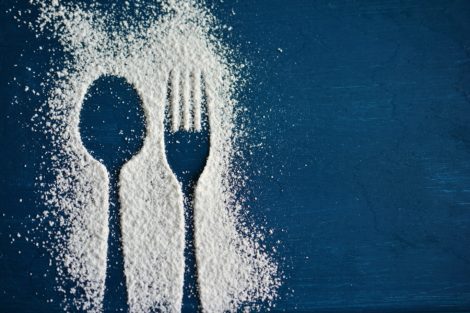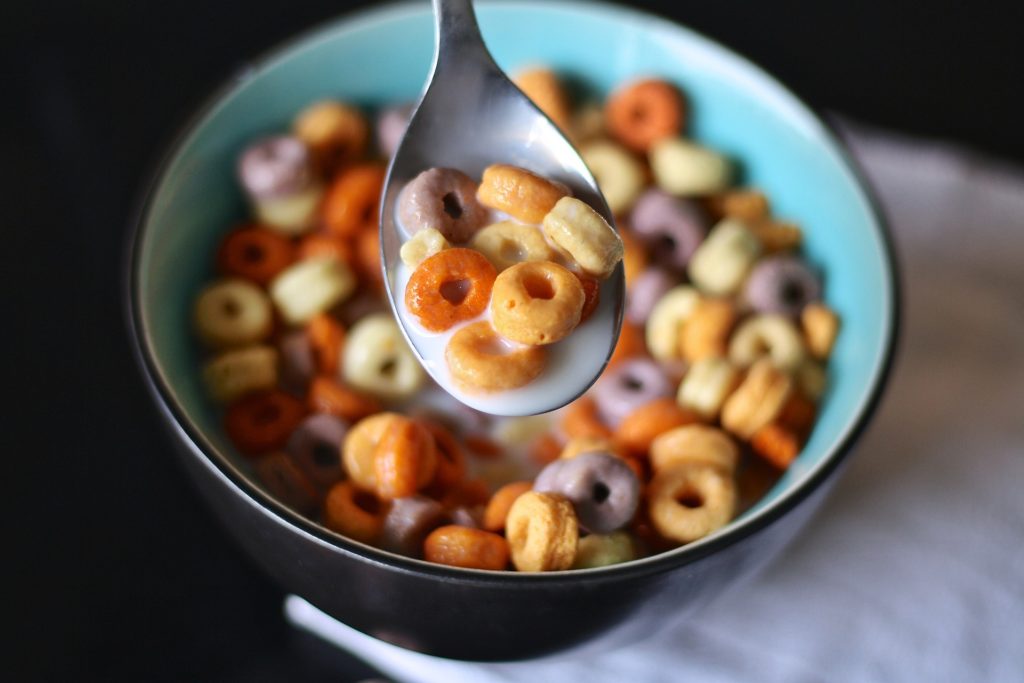**These posts often contain affiliate links. Please see our disclosure policy for details.**
Guest post from Jean Larson licensed and registered dietitian at Essentia Health, one of Up North Parent’s Sponsors
Most Americans consume 20 teaspoons of sugar every day.
In comparison, our paleolithic ancestors consumed an estimated 20 teaspoons in a year.
But we’re not digging into the sugar bowl.
Instead, most of the sugar we eat is hidden in foods that we might not even see as sweet treats.
The health risks of excess sugar are vast, including obesity, heart disease, diabetes, cognitive impairment, dementia, and cancer. Less obvious issues include headaches, mood swings, depression, anxiety, lowered immune system, increased stress and nutrient deficiencies.
Locating Hidden Sugar | Avoiding the “-ose”
Sugar can be hard to detect even when reading food labels because it appears under a variety of names.
These include high-fructose corn syrup, sucrose, glucose, maltose, dextrose, lactose, corn syrup, barley malt, maple sugar, sucanat, natural cane sugar, fruit juice concentrate or dehydrated cane juice.
The words sugar, syrup or an ingredient name ending in “-ose” are a few clues to identify ingredients meaning sugar. And don’t be fooled by products labeled “natural” or “organic” because they can contain similar amounts of added sugars.

Where Does Sugar Hide?
More obvious sources of sugar include soft drinks, energy drinks, specialty coffee drinks, candy, bakery desserts, dairy desserts such as ice cream, and other sweetened beverages like iced tea or artificial fruit juices (tropical punch).
Sugary drinks are the biggest source of sugar, so this is an important area to eliminate for people who are just starting to cut back.
Some other top sources of hidden sugar include yogurt, breakfast cereals, granola or protein bars, nut butters, salad dressings, spaghetti sauce, condiments, and non-dairy milks.

To help consumers track added sugars, new nutrition labels have begun appearing on foods.
A new category called “added sugars” can be found underneath the “total sugars” on the label. Breaking out added sugars helps consumers see what sugar comes from an ingredient like dried fruit in a granola bar and what other sugary ingredients were added to boost the sweetness.
The Food and Drug Administration, which regulates food labels, defines added sugars as “sugars that are either added during the processing of foods, or are packaged as such, and include sugars (free, mono- and disaccharides), sugars from syrups and honey, and sugars from concentrated fruit or vegetable juices that are in excess of what would be expected from the same volume of 100 percent fruit or vegetable juice of the same type. The definition excludes fruit or vegetable juice concentrated from 100 percent fruit juice that is sold to consumers (e.g. frozen 100 percent fruit juice concentrate) as well as some sugars found in fruit and vegetable juices, jellies, jams, preserves, and fruit spreads.”
Reading and comparing labels can help you cut the amount of sugar you eat.
Here are some tips and recommendations on popular foods that can be high in hidden sugars.
Reading Labels to Locate Hidden Sugar
| Product | Tips |
| Breakfast cereal | Compare brands and choose the lowest sugar option. A good goal is less than 10 grams sugar per serving, but ideally it’s less than six grams. Even better, swap cold breakfast cereal for homemade oatmeal or granola made from whole oats so you can control the amount of sweetener added. Be cautious of flavored instant oatmeal packets, which can contain high amounts of added sugar. |
| Yogurt | Buy plain, unsweetened yogurt and sweeten it yourself with fruit or a small drizzle of honey. You’ll most likely add much less sugar than a manufacturer. |
| Condiments | Ketchup, barbecue sauce, hoisin sauce, teriyaki sauce, jam, jelly, salad dressings and relish are all condiments that you should compare and look for lower sugar versions. Or use smaller portions. Make your own salad dressings and marinades at home where you can easily modify them to be lower sugar or no sugar added. |
| Granola/Snack Bars | Many granola bars are glorified candy bars due to the amount of sugar added. Some no-sugar-added versions include LaraBars, RXBars, or 100 percent fruit bars/fruit leather. Otherwise, I recommend looking for bars with six grams or less of sugar per bar. |
| Nut butters | Look for natural versions without any added sugar. Ingredients should list simply the nut and salt (if salted). |
| Spaghetti sauce | The quantity of sugar in tomato sauces varies widely, but many common brands make a sauce without any added sugar, including Hunts, Prego and Ragu. Just be sure to flip the bottle over, read the label and compare. |

Jean Larson of Essentia Health
Jean Larson is a licensed and registered dietitian at Essentia Health.
Essentia Health is guided by the values of quality, hospitality, respect, justice, stewardship, and teamwork. From emergency care to convenient care, family care to speciality practice, Essentia Health delivers on its promise to be “Here With You” in the Brainerd Lakes Area. Learn more at www.essentiahealth.org.





Leave a Reply